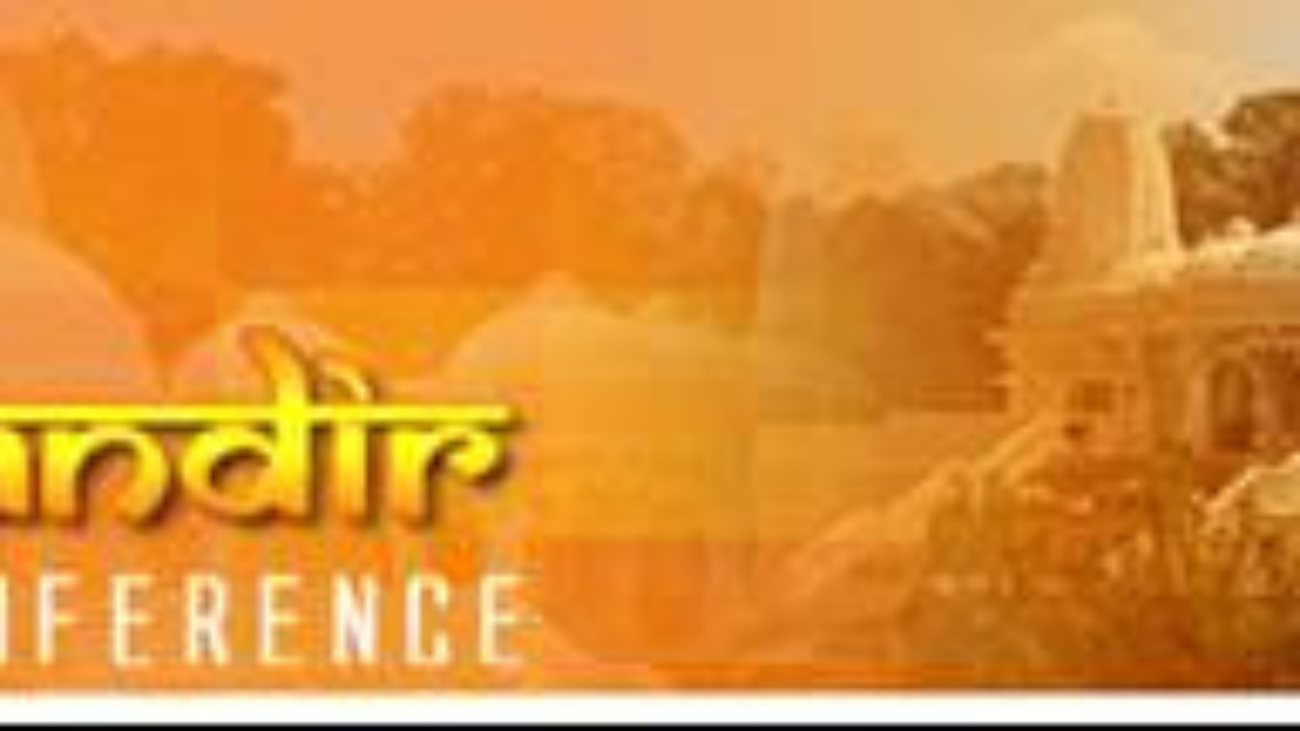Hindu Mandir Priests’Conference (HMPC)is an initiative of theHindu Mandir Executives’ Conference. The mission of HMEC is to provide leadership to the Hindu-American community by encouraging Hindu temples across North America to nourish, protect, and sustain Hindu Dharma.The 4th annual HMPC was hosted by Hindu Temple of Minnesota, MN from May 15–16, 2015.
This year, over 55 pundits, adults, and youth delegates attended this conference, representing various Mandirs and Hindu organizations across the nation. The conference was organized into 4sessions, and the topics were consistent with the HMPC’s objective: Sustainability and Advancement of Sanatana Dharma by making the modes of worship meaningful and relevant for the younger generation of Hindus. The four sessions were: Role and relationship of Priests, Sustaining Hindu temples, Community links, and Hindu American Youth viewpoint.
The program began with a Deep Prajjwalan and Vedic chanting led by all priests in attendance.Raj Suryanarayanan,the religious committee chairperson of MN Hindu Temple, delivered the welcome address and set the conference goalsand objectives.
Pundit Roopnauth Sharma, Chief Priest ofRam Mandir of Mississauga, Canada, delivered the keynote address on‘Hinduism for the new age’. He highlighted the importance of consistency of messages translated by the priests. He also emphasized the need of samuhik (congregational) worship in the temples.
Dr. Shashikant Sane, afounding trustee of MN Hindu Temple, summarized the session by emphasizing the need to establish strong educational programs in the temples, learning from positive practices of communication, interfaith dialog and Fund raising from each other from the entire temple community and implementthose positive things in our respective temples.
Mr. Vishal Agarwal shared the teaching curriculum used for 350 Students of Hindu American Temple School (HATS) over the past 5 years and displayed all the teaching material for everyone. That material would be available in e-book format in the coming months.
Shri Raj Balasubramanian and ShrimatiAnandiBalasubramanian, trustees and past chairs of the Religious Committee of Hindu Temple of MN, coordinated the two sessions dedicated to the priests. There were presentations by all the priests from the Hindu Temple of MN and by several priests from the other MN temples. Pt. Murali Bhattar, Chief Priest of MN Hindu Temple, emphasized that the priests need to be tolerant towards devotees and priestsshould worship with utmost devotion for the benefit of the entire community.
Vallabha Tantry, a young mother and a devotee, expressed the need of inspiring younger generation of Hindus in North America to choose the profession of a Mandir Priest.
Pt. Gowtham Narayan very eloquently described the role of Vedic chanting in temples and also gave a practical demonstration. Shri Parthan Gomadam elaborated the similarities between Sanskrit and Tamil in Vaishnav worship.
Nagalatha Murali, wife of the chiefpriest, at Hindu Temple of Minnesota summarized the shared experiences from all the wives of the temple priests of balancing priest life style and orientation into American lifestyle. She praised the support and cooperation priest families receive from devotees.
Professor Rambachan from St. Olaf College MN commented in his Key Note Address on the 2nd day of the Conference, “Challenge our new generation of Hindus may face is not as much attraction towards other religions but becoming less interested in their own religious traditions.”
Annette Kurek MN whose adopted son from India attends HATS (Hindu American Temple School ) expressed how happy she was that her son attended and enjoyed the school and demonstrated how thorough puppet show stories we can powerfully deliver moral messages to the children attending temple youth programs.
Padmakumar of Sanskrit Bharati, CAaddressed in Sanskrit and highlighted the significance and value of learning Sanskrit on the premises of theHindu temples.
Young AttorneyHarsh Voruganti of Hindu American Foundation, VA talked about safety and security needs for the temples and shared the guidelines published by Hindu American Foundation..
One of the many highlights of the conference was to establish a new tradition of honoring distinguished senior priests, for their dedicated service to the Hindu community for more than two decades, by conferring on them the title of “ArchakaBhushana”. Shri Koteshwaran Gurukkal of Ganesh Temple, Nashville, TN, Shri Krishnarajan Devarajan of Hindu Temple, Lemont IL, and Shri S Venkatacharyulu of SV Temple, Pittsburgh, were the recipients of this Award for the year 2015. In addition, Shri Kandamangalam Gopala Deekshidhar was recognized for his spiritual service to the Hindu Temple of Minnesota.



In theconcluding session of the conference, Sanjay Mehta of Pittsburgh presented the summary of the conference presentations and talks and action items to work on:
- Develop a mechanism to build constant communication amongst temple management and priests to share experiences and best practices.
- Structure Orientation: Organize English language and Communication workshop for priests.
- Prepare a play book / short manual / guide which contain common answers delivered by priests to the temple visitors, thereby maintaining the consistency of messages.
- Initiate a think tank to define and build a future generation priests development program in North America.
Convener of HMPC, Sant Gupta of Durga Temple,VA, and Pundit Murali Bhattar thanked all the delegates, Minneapolis Hindu Temple volunteers& management, and the organizers for a successful 4thHinduMandirPriestConference.
Hindu Mandir Priests’ Conference is an initiative of World Hindu Council of America (VHPA).
VHPA, founded in 1970 and incorporated in the state of New York in 1974, is an independent, nonprofit, tax- exempt and volunteer-based charitable organization serving the needs of Hindu community in USA. It aims to build a dynamic and vibrant Hindu society rooted in the eternal values of Dharma and inspired by the lofty ideal of VasudhaivaKutumbakam, i.e. the entire creation is one family.
UtsavChakrabarti
Relations Coordinator
World Hindu Council of America (VHPA)
Ph.: 732-744-0851
Web: www.vhp-america.org
Facebook: https://www.facebook.com/vishwa.sampark
Twitter: ootzchakra, Email: gensecy@vhp-america.org















